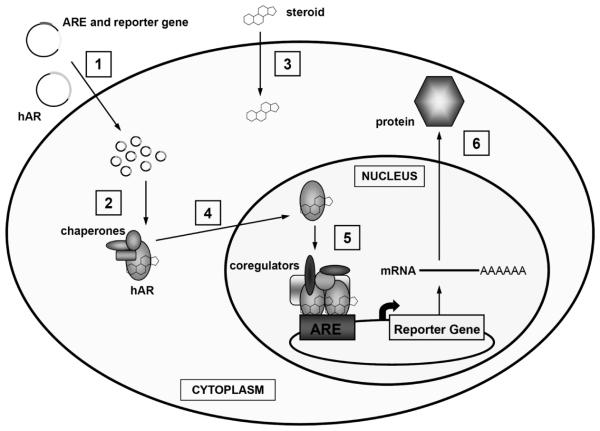Figure 5.
The process of the biological assay. 1. DNA vectors encoding the hAR and an ARE linked to a reporter gene are transfected into cells. The hAR is under the control of a constitutive promoter and is therefore constantly expressed. 2. After the vectors are transfected into the cell, the hAR is produced and the ARE-reporter gene plasmids are present. 3. After the addition of an hAR ligand (steroid), the ligand will bind to the receptor. 4. Upon ligand binding, the hAR will translocate to the nucleus. 5. Once in the nucleus, hAR receptor dimers will bind to the AREs on the vectors and the reporter gene will be transcribed and a protein produced. 6. The reporter protein will be collected and measured.

